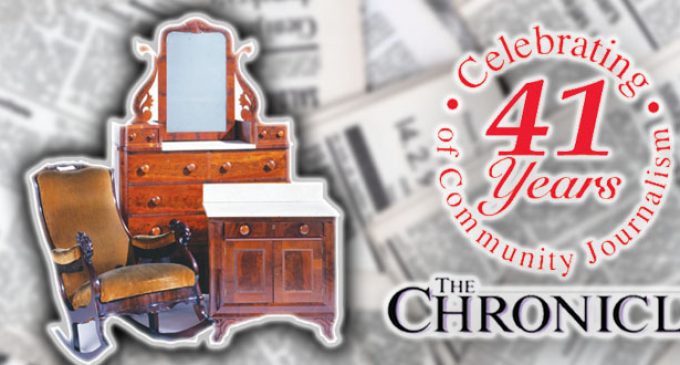Free black man masters making furniture during time of slavery

Photo by Eric Blevins
Pieces from the Thomas Day Collection in the N.C. Museum of History, Raleigh, are shown.
BY JUDIE HOLCOMB-PACK
FOR THE CHRONICLE
Slavery was the order of the day in North Carolina in the early 1830s, but one free black man became so influential that the General Assembly passed a law in his favor after pressure from the white people in his community. Who was this man? Thomas Day.
Thomas Day was born in 1801 in Halifax County, Virginia. Record-keeping was not very accurate at that time, but it is believed that his mother was a Native American. Tom was born free because his mother was free. He was educated, could read and write, and at an early age began learning the woodworking trade, probably as an indentured servant. According to Virginia law, his indenture had to end when he reached the age of 21.
In 1823, Tom moved to Milton, North Carolina, intending to stay for four years to learn the furniture trade from local craftsmen, after which he would return to Virginia to marry his sweetheart, Acquilla, another free black who lived in Halifax County. Almost 30 years later, Tom wrote this to his daughter, “I came here to stay four years, and am here 7 times 4.” He lived in Milton for the rest of his life.
But how did he become so influential that he could persuade the General Assembly to change a law in his favor? That is the fascinating part of his story.
As Tom’s reputation for quality furniture grew, so did his reputation as a good man. He was described as “a first-rate workman, steady and industrious.” Tom was also a devout Christian and during that time, traveling preachers held camp meetings throughout the South. These were open to all –black and white, enslaved and free – and Tom attended these revivals. This gave Tom the opportunity to get to know and become friends with many of the town’s white people.
In 1827, Tom spent $550 and purchased his first workshop. He advertised in the Milton Gazette, thanking his patrons for their business and advertising that he carried mahogany, walnut and stained furniture, including bedsteads. Soon planters were asking him to complete whole rooms of furniture. His business was booming, but he couldn’t forget his true love, Acquilla.
Tom continued to work toward his goal of marrying Acquilla and bringing her to live with him in Milton. However, a law passed in 1826 almost brought an end to his dream. The law stated that no free blacks could enter the state. Those who crossed the state line and stayed for more than 20 days paid a fine of $500, an exorbitant fee in those days. Ignoring the law meant arrest and enslavement for 10 years.
Tom decided to move his business to Halifax County and marry Acquilla. When the residents of Milton head this, they sent a petition to the General Assembly in Raleigh requesting that a bill be passed allowing Acquilla the privilege of migrating to the state, free from fines and penalties. The law passed and in 1830 Tom married Acquilla. She moved to Milton and shortly after they began to start their family.
The 1830 census shows that Thomas Day was truly an unusual man. Not only was he a free black person living in a slave state, he was also wealthy. He was an artisan who trained white apprentices. He owned two slaves, which allowed him to teach them a trade as well as to protect them. Tom’s marvelous furniture was sold throughout North Carolina. He made pieces for the University of North Carolina at Chapel Hill. He provided the furnishings for the Presbyterian Church in Milton with the understanding that his family would be allowed to sit in the pews, not in the back of the church. He manufactured furniture for state buildings in Raleigh. This allowed Tom to send his children to the North to be educated at a private school in Massachusetts.
In 1857, America exprienced a financial panic and Tom was becoming pinched by creditors in the North and debtors in the South. Although Tom’s business had been quite successful for many years, by 1858 things were becoming shaky. His customers were not paying him and as a black, he could not enforce payment. By 1859, he began selling his tools, land, horses and slaves. It is believed that Tom died in 1861 at the age of 60. He is buried on a farm about two miles from Milton.
Many pieces of his furniture survive and are treasured pieces in collections, such as in the North Carolina Museum of History.
Thomas Day is known as the Master of Mahogany. Thanks to col-lectors of his furniture, historians and museums, his legacy lives on to this day.














